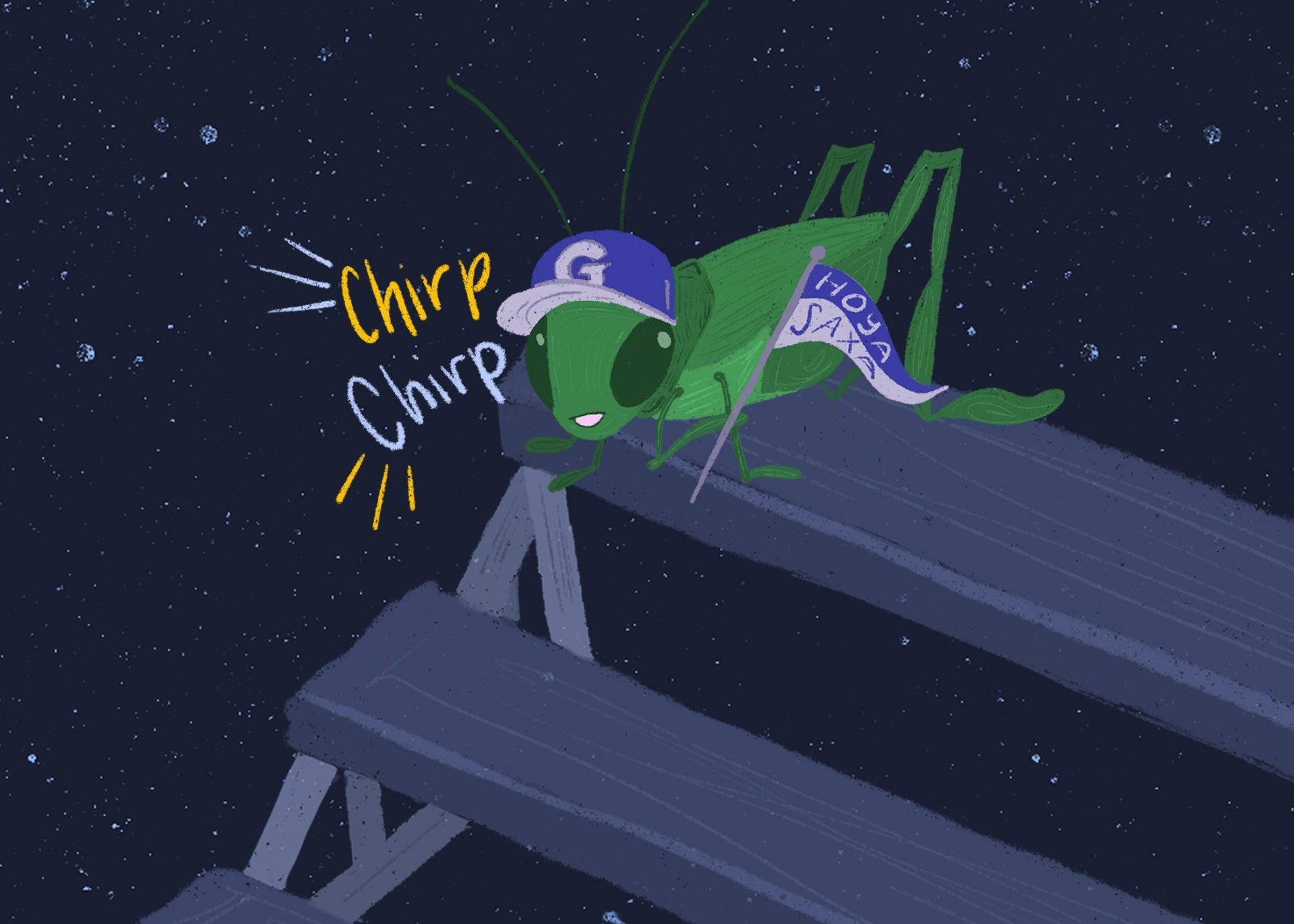I didn’t come to Georgetown for the football team. But, as an Ohioan, football is in my blood. I bleed scarlet and gray. From the brutal rivalry between Ohio State (OSU) and Michigan, to our two NFL teams, every Ohioan lives and breathes football—even if they don’t want to. I miss those Saturday mornings in October, watching a game against some unknown school on the 65-inch TV my Mom got just for football.
See, the thing that makes Ohio State football so exciting is the atmosphere. Even while sitting at home, watching people in the stands chant “Hang on Sloopy” and jump out of their seats when we scored a touchdown always brought a smile to my face. The yearning for football was almost tangible, and I always loved the feeling of being united with the 100,000 people in the stadium and the millions like me watching from home. Both players and fans could feel the taste of victory in the air.
So, I’m sure you could only imagine my excitement on Aug. 31 when I attended my first Georgetown football game as a college student. I was electrified at the idea of finally being in the crowd and experiencing a college football game in person.
Then, suddenly, the thrill of the game was gone when I walked into Cooper Field and saw that Davidson had more fans than us. Although they have a student population of less than 2,000, it seemed like the whole university was there. Even still, Davidson is over five hours away; so why don’t Georgetown students attend football games?
The biggest issue that removes the atmosphere many students need for enjoying football is that people don’t attend our home games. But why don’t students attend?
For many students, the answer lies in not being aware of when games are taking place. “No one says, ‘I’m going to the game.’ Your average Georgetown student has no idea there is a game on,” Pietro Elie (CAS ’25) said. “Unless they walk past on a Saturday morning and go ‘Oh, there was a game.’”
Moreover, despite Georgetown offering free admittance to all football games for students with a valid GOCard, students are noticeably absent when compared to the level of attendance at other universities, like OSU, where students have to purchase season passes to attend games.
According to Nami Bolat (CAS ’25), another senior, students like herself are even less likely to attend home games because they lack a necessary social element.
“It would be great if they were good and I could feel proud, [but] I don’t have friends who go to this shit either,” said Bolat, who had never attended a Georgetown football game before this year’s homecoming.
So, how do you fix the lack of student support going into these games? The answer lies in curating an atmosphere that feels less like that of a high school game and one more suitable for the proud university that we are.
However, to fix this, a lot of things need to change. As of right now, Georgetown does not have a dedicated student section for its football games, although such sections do exist for sports like basketball. The lack of a dedicated student section for football makes the game less interesting for students and potentially hurts player morale.
Further, we have a small but mighty pep band, but no one can even hear it. Without a dedicated space in the stands, the pep band doesn’t stand a chance to be heard by students when up against the giant speakers that surround the stadium. In college football, you drown out the other team’s band with music over the loudspeakers—not your own. It’s disrespectful to the pep band and to the students who never get to hear the time and hard work that the band put into preparing for the games. This bump to morale is only exacerbated by Athletics not allowing clubs like Hoya Blue to throw t-shirts or use noisemakers during games. If there was a designated student section reserved by the university, then everyone could not only hear the pep band, but could be corralled into a cacophony of chants by Hoya Blue, the student organization stand-in for an official student section here at Georgetown
As our nontraditional, albeit official student section, Hoya Blue should put in a more concerted effort to bring new freshmen out to games. Freshmen don’t know what a losing streak feels like here (yet) nor are they full of the negativity and disappointment that comes along with it. We are optimistic, doe-eyed, hopeful kids who just want to see our team win sometimes. More than that, the restrictions on Hoya Blue’s activities perpetuates this cycle.
This is only exacerbated by athletics not allowing the club to throw t-shirts or bring noisemakers.
Even now, first-years like Madison Coyne (CAS ’28), who has attended Kentucky State University games, are already teeming with ideas of how to improve Georgetown’s own student section at games.
“If Hoya Blue could run the student section and do cheers, or do some t-shirt tosses like normal schools do, it would make it a lot more fun,” Coyne said, expressing her disappointment in the overall atmosphere of her first Hoya game. “I went because… it doesn’t get any better than homecoming, which is kind of sad because it wasn’t the best.”
Although football isn’t our main sport, these changes would be a good start to building a real student section—even if we aren’t good. You can have school spirit and never win—just think of our men’s basketball team, they only won nine of the 32 games they played last year, yet my seniors say the stands are always radiating with energy.
I believe Hoya Blue and Athletics have a responsibility to make games more enjoyable so more students will come. But more than that, I hope that students make an effort to show up and show out at our games. Football is only as much fun as you get out of it. We can revitalize the student section of our football games. It will be difficult, but think of how much fun they could be! Almost as fun, I imagine, as our basketball games.
We may not be good at football, but we’ll never know if our team could’ve been better with just a little bit of crowd support. But until then, I guess I’ll just have to keep rooting for OSU and making enemies of all of the kids from Michigan (the entire state) on campus.






LET’S MAKE OUR STUDENT SECTION ROCK!!!! LET US BRING THE PRIDE OUR AMAZING UNIVERSITY AND CAMUS DESERVES!!!